The name of this pub recalls the Carron Works which opened in Falkirk in 1790. The Carron Works began the iron industry which dominated the area for more than 200 years.
Prints and text about The Carron Works.
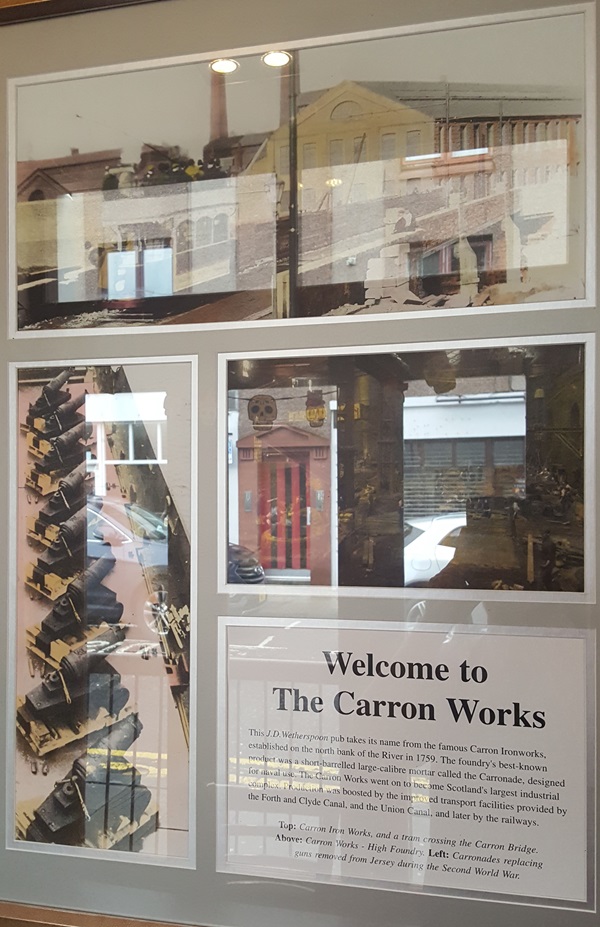
The text reads: This J D Wetherspoon pub takes its name from the famous Carron Ironworks, established on the north bank of the river in 1759. The foundry’s best-known product was a short barrelled large calibre mortar called the Carronade, designed for navel use. The Carron Works went on to become Scotland’s largest industrial complex. Production was boosted by the improved transport facilities provided by the Forth and Clyde Canal, and the Union Canal, and later by the railways.
Top: Carron Iron Works, and a tram crossing the Carron Bridge
Above: Carron Works – High Foundry.
Left: Carronades replacing guns removed from Jersey during the Second World War.
Prints and text about the history of Falkirk.
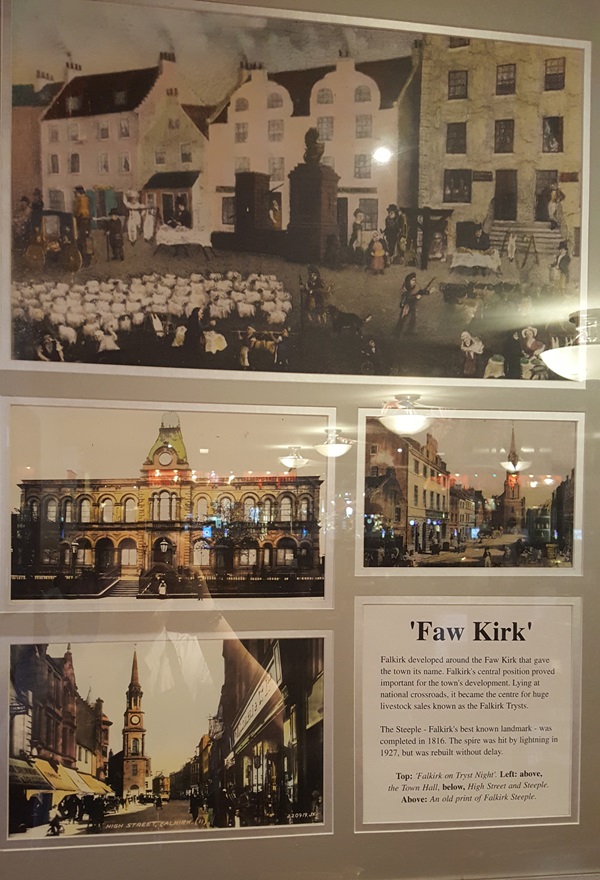
The text reads: Falkirk developed around the Faw Kirk that gave the town its name. Falkirk’s central position proved important for the town’s development. Lying at national crossroads, it became the centre for huge livestock sales known as the Falkirk Tryst.
The Steeple – Falkirk’s best known landmark – was completed in 1816. The spire was hit by lighting in 1927, but was rebuilt without delay.
Top: Falkirk on Tyrst Night
Left: above, the Town Hall, below, High Street and Steeple
Above: An old print of Falkirk Steeple.
Text about Bank Street.
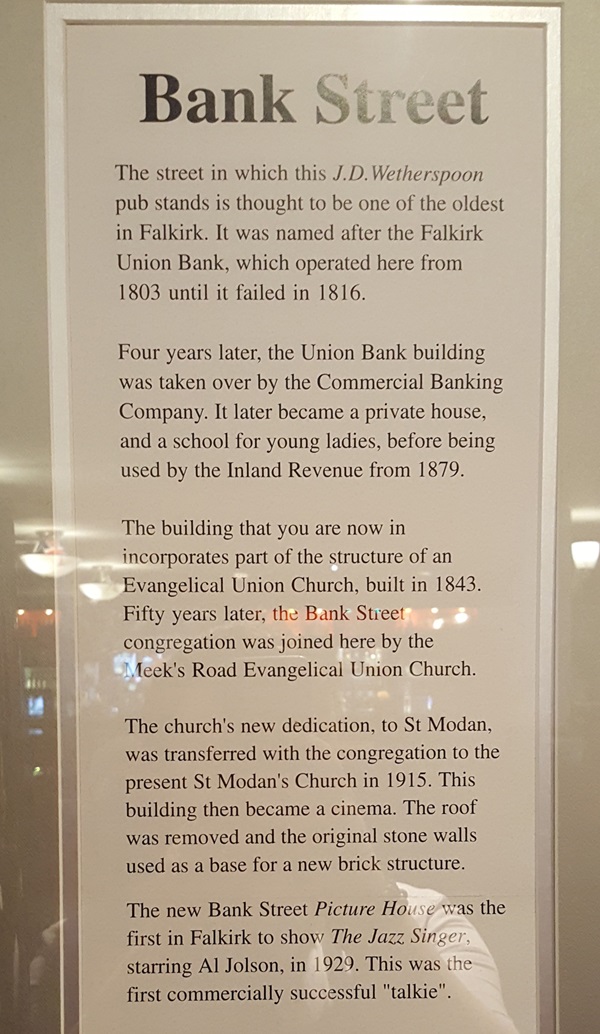
The text reads: The street in which this J D Wetherspoon pub stands is thought to be one of the oldest in Falkirk. It was named after the Falkirk Union Bank, which operated here from 1816.
Four years later, the Union Bank building was taken over by the Commercial Banking Company. It later became a private house and a school for young ladies, before being used by the Inland Revenue from 1879.
The building that you are now in incorporates part of the structure of an Evangelical Union Church, built in 1843. Fifty years later, the Bank Street congregation was joined here by the Meek’s Road Evangelical Union Church.
The church’s new dedication, to St Modan, was transferred with the congregation to the present St Modan’s Church in 1915. This building then became a cinema. The roof was removed and the original stone walls used as a base for a new brick structure.
The new Bank Street picture house was the first in Falkirk to show The Jazz Singer, starring Al Jolson, 1929. This was the first commercially successful ‘talkie’.
Text about Callendar House.
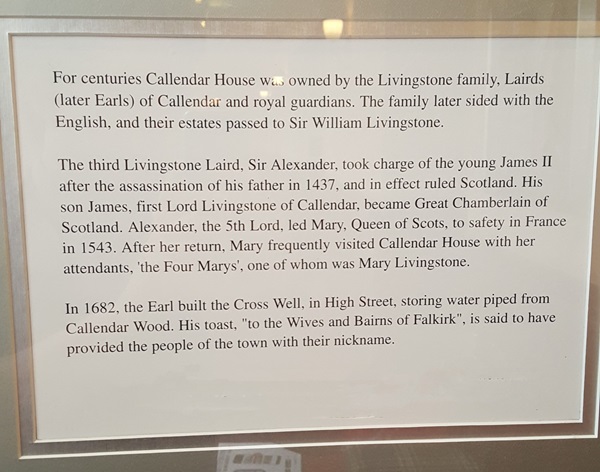
The text reads: For centuries Callendar House was owned by the Livingstone family, Lairds (later Earls) of Callendar and royal guardians. The family later sided with the English, and their estates passed to Sir William Livingstone.
The third Livingstone Laird, Sir Alexander, took charge of the young James II after the assassination of his father in 1437, and in effect ruled Scotland. His son James, first Lord Livingstone of Callendar, became Great Chamberlain of Scotland. Alexander, the 5th Lord, led Mary, Queen of Scots, to safety in France in 1543. After her return, Mary frequently visited Callendar House with her attendants, ‘the Four Marys’, one of whom was Mary Livingstone.
In 1682, the Earl built the Cross Well, in High Street, storing water piped from Callendar Wood. His toast, “to the Wives and Bairns of Falkirk”, is said to have provided the people of the town with their nickname.
External photograph of the building – main entrance.
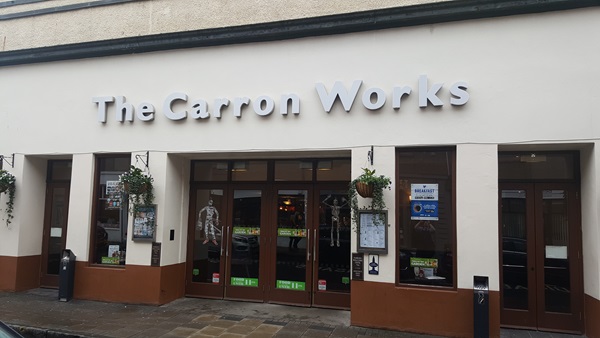
If you have information on the history of this pub, then we’d like you to share it with us. Please e-mail all information to: pubhistories@jdwetherspoon.co.uk